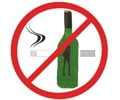One of the first studies of social sources of alcohol has found that a high percentage of young males were willing to purchase alcohol for underage youth.Many high school students consume alcohol both regularly and heavily. Most of them obtain alcohol from “social sources” of alcohol, individuals who illegally provide alcohol to youth, as opposed to commercial sources.
“Many types of social sources of alcohol are used by underage youth, including parents, parents of friends, friends, acquaintances, co-workers, siblings, and even strangers approached outside of alcohol establishments,” said Traci L. Toomey, associate professor at the University of Minnesota and corresponding author for the study.“This can occur in a variety of settings, including private residences, at parties, in public settings, at sporting events, and community events. Yet what may seem innocuous can lead to many problems, including traffic crashes, assaults, sexually transmitted diseases, and unplanned pregnancies.”
“Although they drink less frequently,” added Joel Grube, director and senior research scientist at the Prevention Research Center, “youth are more likely than adults to drink heavily and to the point of intoxication. Overall, it has been estimated that the costs of underage drinking in the U.S. are as much as 61.9 billion dollars annually in medical costs, lost life years, and lost productivity.”
“Little research has addressed the social provision of alcohol,” added Toomey. “One of the challenges is that there are several types of social sources. Each needs to be addressed so that we can begin to identify effective interventions.
For this study, we examined “shoulder tapping,” where an underage person approaches a stranger outside of an alcohol establishment and asks this person to purchase alcohol for him or her. We had heard that this was a popular strategy in some communities, but no systematic research had been conducted.”
Researchers conducted two waves of shoulder-tap requests outside of 219 randomly selected convenience or liquor stores in both urban and suburban areas. Requesters were young adults (4 females, 1 male) aged 21 years or older who appeared to be 18 to 20 years old. Requesters explained that they did not have their identification with them, and asked the adults to purchase a six-pack of beer for them.
Advertisement
“Only a small percentage – eight percent – of the general adult population entering alcohol establishments are willing to purchase alcohol for individuals who appear under age 21,” said Toomey. “This is an encouraging finding. However, we also found that a higher percentage of young males – 19 percent – were willing to purchase alcohol for underage youth.”
Advertisement
“Furthermore,” added Toomey, “one in five young men entering alcohol establishments in this area would have been breaking the law if our requesters had actually been under age 21. There are serious implications for social provision of alcohol to a minor; in Minnesota it is a gross misdemeanor. If there is an injury or death related to the alcohol provision, the adult could be charged with a felony.”
Both Toomey and Grube had recommendations for addressing the problem.“If adults purchase alcohol and then provide it to underage youth, law enforcement agents may either cite or educate these adults,” said Toomey. “Media publicity surrounding these campaigns may also help to educate/warn the general adult population.
However, given that only eight percent of the general adult population agreed to purchase alcohol for our requesters, communities concerned about underage youth obtaining alcohol through shoulder tapping should probably target their resources towards young males rather than the general adult population.”
“Another approach is through the use of a reward and reminder protocol, which is not an enforcement action,” said Grube. “Rather, the stranger is given a congratulatory letter if they refuse to purchase alcohol or, if they make the purchase, a reminder of the law and their civic responsibility.
Educational programs might also work, although it seems probable that most adults already know that buying alcohol for youth is illegal.” However, he stressed, “it is important that any intervention be part of a larger approach that addresses the multiple social and commercial sources of alcohol for youth.”
Source-Eurekalert
JAY/M











